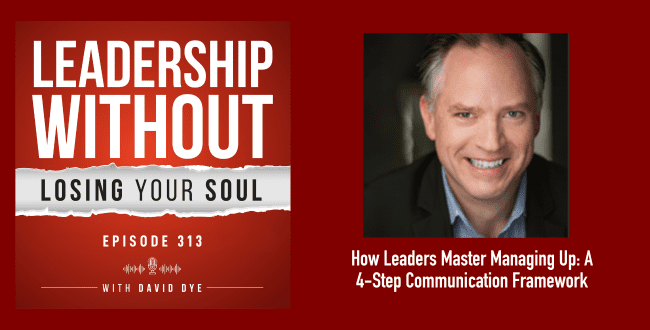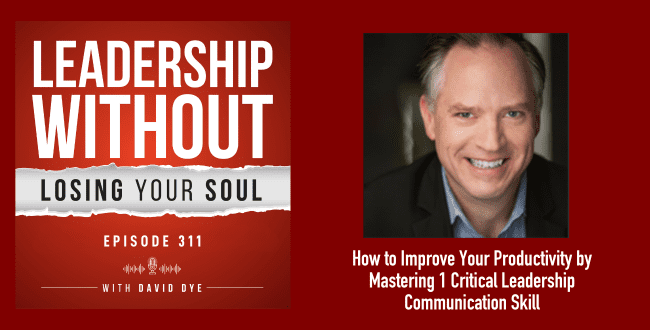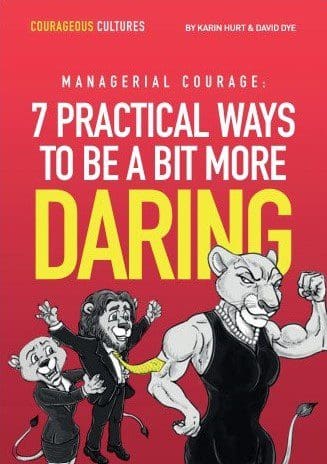Episode 314: What if one simple communication framework could help your boss actually listen to—and act on—your ideas?
If you’ve ever felt ignored, dismissed, or unsure how to speak up effectively, you’re not alone. This episode gives you a practical approach to managing up, so you can confidently share ideas, advocate for your team, and build credibility as a strategic thinker.
Here’s what you’ll take away when you tune in:
-
A four-step communication framework to make your ideas more compelling and actionable
-
Insight into why well-meaning messages often fall flat—and how to fix them
-
Real examples of how others used this framework to gain support and momentum
Listen now to start getting the traction your ideas deserve with the people who can say yes.
The Problem with Managing Up & Why It Matters
[00:00] – Intro to the Episode.
David Dye introduces a powerful four-step communication framework to help leaders gain influence, represent their teams effectively, and get their ideas heard the first time.
[01:03] – Two Leaders, Same Frustration.
We meet two professionals—one advocating for desk space, the other for a cost-saving initiative—who failed to gain traction because of how they positioned their messages.
[02:44] – The Real Consequences of Not Being Heard.
David explains how poor communication when managing up can erode credibility, demoralize teams, and even cause leaders to question their effectiveness and purpose.
[03:35] – Before You Pitch: Build Your Foundation.
You must first earn credibility by doing your job well—otherwise, even the best ideas will be seen as distractions, not contributions.
[04:34] – Introducing the IDEA Communication Framework.
The four-part IDEA model (Interesting, Doable, Engaging, Actions) is revealed as the key to communicating ideas in a way that resonates with leadership.
Using the Communication Framework to Gain Influence
[05:35] – I for Interesting: Think Strategic Relevance.
Start every pitch by explaining why your idea matters to your boss or their boss. Strategic relevance earns attention; complaints do not.
[07:58] – D for Doable: Show It Can Be Done.
Avoid overwhelming ideas that need high-level approval. Instead, highlight actions within your control—or show that permission is the only missing link.
[09:35] – E for Engaging: Rally Allies and Preempt Resistance.
Effective communication includes identifying stakeholders and addressing resistance before it shows up in the room. Build coalitions to boost credibility.
[12:30] – A for Actions: Ask for the Smallest Yes.
Wrap every idea with a specific next step. A simple, doable ask—like an intro or a small budget—makes it easier for leaders to say “yes.”
[17:53] – Why This Framework Builds Long-Term Credibility.
Even if your idea isn’t selected, using the communication framework positions you as a strategic thinker who understands the business—and that builds lasting influence.









0 Comments